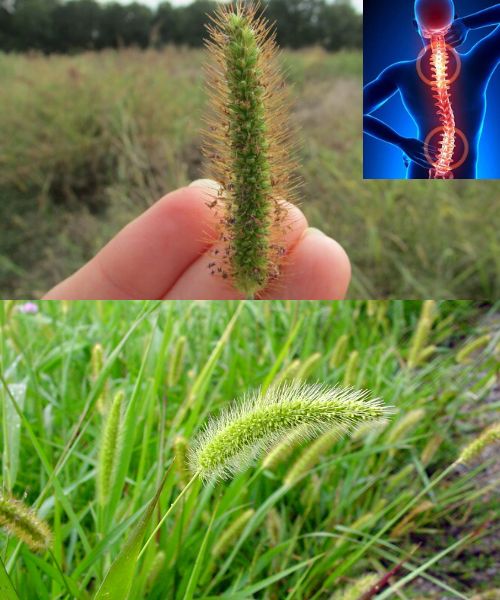Foxtail grass (Setaria spp.) is often seen as a wild and weedy plant, but beneath its unassuming appearance lies a range of benefits and uses. With its bushy, brush-like seed heads that resemble a fox’s tail, this grass is a common sight in fields, gardens, and roadsides. While it’s known for being hardy and resilient, foxtail grass also holds surprising value for both humans and wildlife.
Here’s a closer look at the benefits and uses of this versatile plant.
What is Foxtail Grass?
Foxtail grass is a group of annual or perennial grasses found in various climates around the world. It thrives in poor soil conditions and spreads quickly, which has made it both a survivor and a plant of interest for agricultural and ecological purposes. Common species include:
- Green foxtail (Setaria viridis)
- Yellow foxtail (Setaria pumila)
- Giant foxtail (Setaria faberi)
While it’s often viewed as a weed in cultivated fields, it plays a significant role in nature and has various practical uses.
Benefits of Foxtail Grass
1. Erosion Control
Foxtail grass is highly effective in preventing soil erosion. Its dense roots hold the soil together, especially on slopes and disturbed land, reducing the risk of water runoff and soil degradation.
2. Forage for Livestock
Some species of foxtail grass, especially when young and tender, can be used as forage for livestock like cattle, goats, and sheep. However, care should be taken to avoid mature seed heads, as they can cause irritation in animals.
3. Habitat for Wildlife
Foxtail grass provides excellent cover and nesting material for small mammals, birds, and insects. Its seeds are also a food source for various bird species, including quails and sparrows, making it valuable in supporting biodiversity.
4. Natural Mulch
When harvested and dried, foxtail grass can be used as a natural mulch in gardens. It helps retain soil moisture, suppress weeds, and gradually adds organic matter to the soil as it breaks down.
5. Low-Maintenance Landscaping
Foxtail grass is resilient and thrives in harsh conditions, making it a suitable choice for low-maintenance landscaping. It can add a rustic, natural look to outdoor spaces when allowed to grow freely.
Uses of Foxtail Grass
1. Traditional Medicine
Foxtail grass has been used in some traditional medicinal practices:
- Poultices: Crushed grass can be applied to wounds or skin irritations.
- Infusions: Seeds and leaves are sometimes used in herbal teas for mild digestive complaints.
2. Craft and Decorative Uses
The fluffy seed heads of foxtail grass are often used in:
- Bouquets and floral arrangements: Their unique texture adds interest to dried or fresh displays.
- Weaving and crafts: Indigenous communities have used grasses, including foxtail, for weaving mats and baskets.
3. Cover Crops
In agricultural settings, foxtail grass can be used as a cover crop to prevent soil erosion and improve soil health in off-seasons.
4. Seed Harvesting for Feed
The seeds of some foxtail species can be harvested and used as feed for birds or poultry.
Potential Challenges and Precautions
While foxtail grass has its benefits, it’s not without challenges:
- Irritation to Animals: The barbed seed heads can become lodged in the mouths, noses, or fur of animals, causing irritation or injury.
- Weed Management: Its fast growth and invasive nature can outcompete other plants, making it a nuisance in gardens and agricultural fields.
- Allergic Reactions: For some people, foxtail grass can trigger seasonal allergies due to its pollen.
How to Manage Foxtail Grass Responsibly
- Harvest seed heads before they mature to prevent spreading.
- Use it strategically in erosion-prone areas or as forage while young.
- Regular mowing can help control its spread in unwanted areas.
Foxtail Grass in Ecology
Despite its reputation as a weed, foxtail grass plays an important role in ecosystems:
- Pioneer Species: It grows in disturbed or degraded areas, preparing the soil for other plants.
- Carbon Sequestration: Like other grasses, it captures carbon dioxide and helps reduce greenhouse gases.
Final Thoughts
Foxtail grass is more than a common roadside plant—it’s a resilient, multifunctional species with ecological, agricultural, and practical value. While it requires careful management, its benefits in erosion control, forage, and wildlife support make it a worthy ally in the right settings.
Whether you’re using it as natural mulch, weaving it into crafts, or simply appreciating its role in nature, foxtail grass deserves a closer look. Have you found creative uses for foxtail grass in your life? Share your experiences in the comments! 🌾
